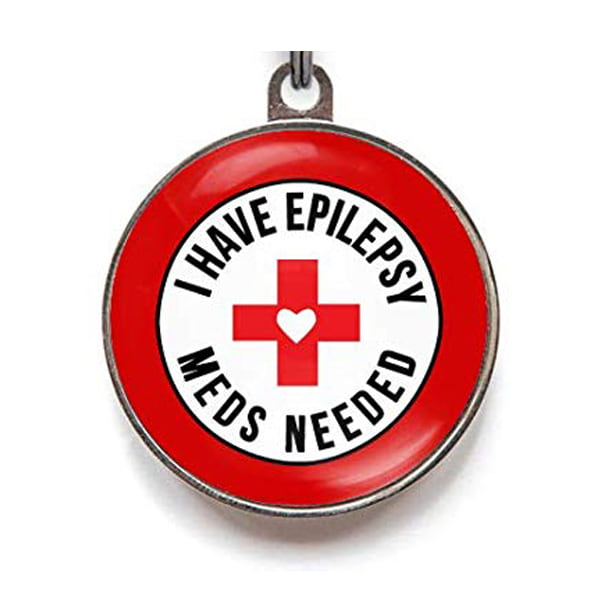Keeping your dog calm during his or her most excitable moments, especially when traveling, is an essential part of successful pet ownership. Unfortunately, many dogs tend to get over-enthused about certain events. Many of them also struggle with car sickness or vomiting in general. Luckily, there are things you can do to manage these issues and, in some cases, medication is the best option. Acepromazine is a medication given to overly excited dogs, especially when traveling. It is also used to prevent vomiting.
It’s important to note that acepromazine and all medications are not right for every pet. In certain cases, giving a dog this medication could cause an entirely new set of medical concerns, so you need to carefully assess your risks and speak to your vet about your dog’s specific medical history and issues to make the best decision for your pet’s well-being.
If travel is in your pet’s future or your vet has suggested using acepromazine to treat an issue, what should you know beforehand?
What is Acepromazine?

Before giving your dog any medication, it’s important to know what it is, what it’s used for, how it works, and if it is likely to trigger any potential side effects.
Acepromazine is a phenothiazine that is a tranquilizer. For a long time, it was the most common sedative prescribed to over-excitable dogs. However, over time, fewer vets recommended it because of various concerns with the drug. This doesn’t necessarily make it unsafe, but it’s not right for every dog and shouldn’t be considered a long-term solution for issues your dog is experiencing.
The most common reason acepromazine is prescribed is to calm an anxious dog. It can be especially effective for situations that include travel. Dogs tend to experience less agitation and mental stress when taking acepromazine. It makes the dog docile and might even induce sleepiness. Some owners found it useful when taking their dog to the vet or groomer when those events caused stress or excitement.
Acepromazine can be used for dogs when they are:
Acepromazine is believed to work by blocking receptors in the central nervous system. The dog’s brain is unable to process messages normally, which causes relaxation and sedation. It is not known exactly how the drug works, though, which is one of the reasons it has fallen out of favor as the preferred drug for treating excitability. There are also concerns about the drug’s effect on the heart and other bodily organs and many dogs experience unpleasant side effects when taking acepromazine.

As with all medications, acepromazine is known to trigger side effects. Unfortunately, some of these side effects can be of significant concern for your pet.
Acepromazine affects breathing, blood pressure, and body temperature – all important functions in the body. Tinkering with these issues can be especially problematic for dogs that already have underlying health issues. And unfortunately, because some problems can go unrecognized and/or undiagnosed, you might not know your dog has a problem until acepromazine triggers a reaction.
The most common side effects of giving your dog acepromazine include:
Acepromazine has anticholinergic, antispasmodic, antiemetic, antihistaminic, and alpha-adrenergic blocking properties.
Cats and horses are sometimes given acepromazine, but dogs tend to be particularly sensitive to the drug’s cardiovascular side effects. There have been instances of cardiovascular collapse in both dogs and cats. Other serious symptoms/reactions to acepromazine include:
Veterinarians might be hesitant in prescribing acepromazine for travel anxiety – one of its main uses – because of potential exposure to temperature extremes, which is often the case during plane travel. This is because of the drug’s ability to alter temperature control and trigger hypo- or hyperthermia.
Some vets also prefer to only use the drug when there is easy access to veterinarian care, which isn’t the case during plane travel.
It has been noted that acepromazine tends to trigger side effects that are more common and more serious in certain breeds. It doesn’t mean you should never give the drug to your dog if he or she is of these breeds, but it does mean that you need to be especially vigilant in identifying and dealing with side effects.
The breeds that appear to be most sensitive to acepromazine include:
In most cases, the dosage will be adjusted if you are giving acepromazine to a dog of one of these breeds.
Epilepsy
Dogs that are prone to epilepsy might experience problems if given acepromazine. The drug is known to lower the threshold for seizures, which means that a dog taking acepromazine is more likely to have a seizure. If your dog already suffers from epilepsy or some other type of seizure disorder, using this medication creates a scenario in which he or she will be likely to have a seizure. In most cases, acepromazine use should be avoided for dogs that have epilepsy or are prone to seizures.
Dogs with heart disease might not be good candidates for acepromazine. The drug lowers blood pressure and forces the heart to work harder to return blood pressure to a normal range. When a dog has heart disease, his or her heart is already working harder than normal, so the drug will be increasing the burden even more. Acepromazine can be dangerous for a dog with heart disease and if it is used at all, it should be given in as small a dose as possible. Most vets try to find an alternative and won’t give acepromazine to a dog with heart disease unless there is no alternative and the drug is necessary.
Like many drugs, giving acepromazine to an older or elderly dog can be risky. Older dogs tend to move slower than their younger counterparts because their joints and muscles have weakened over time. When you give any drug to an older dog, it takes longer for the body to break down the drug, which means you might find your older dog is sleepier and more vulnerable to side effects for a longer period after taking acepromazine.
Some owners have detected an issue in their dog’s eyes. When your dog gets sleepy, he or she has a flap of skin that moves in from the inner corner of each eye. Sometimes this is called an extra eyelid. Older dogs that take acepromazine exhibit signs of this skin popping across the eye. After the drug wears off their dog’s eyes returned to normal, but while the drug was in the system, it created this sometimes startling side effect.
There is a reason to believe the giving your dog acepromazine can make him or her more aggressive. The drug tends to suppress a dog’s self-control and creates a situation in which dogs are more likely to bite when provoked. Some otherwise mild-mannered non-biters have acted out after taking acepromazine. There have also been instances in which dogs that are prone to aggressive behavior act out even more after using the drug. Many dog owners reported their troubled dog’s behavior worsened with the use of acepromazine.
It is possible to overdose on acepromazine. If you notice any symptoms of overdose, you should seek emergency medical attention for your dog immediately. Overdose symptoms might include:
A dog that has overdosed via oral administration will need to be treated by emptying the stomach and ongoing monitoring and other supportive care. Drugs might also be administered to treat an acepromazine overdose. Phenylephrine and norepinephrine are usually given to treat acepromazine-induced hypotension and barbiturates or diazepam might be used to treat seizures brought on by an overdose.

One of the most common concerns when giving a dog acepromazine is how poorly it mixes with other medications. Data shows it tends to trigger one of two problems:
1. Using acepromazine when your dog is taking another drug causes a more potent reaction from the other drug
2. Using acepromazine with another drug tends to counteract the other drug and make it ineffective
Whether your dog’s other mediation(s) will become more potent or ineffective depends on what that other drug is. However, if your dog is taking medication for any other reason, it’s important to alert your vet to that fact and carefully consider your options. In most cases, if there is an alternative to acepromazine, dogs taking other medications should be given the alternative.
There are instances in which giving a dog acepromazine is appropriate. Healthy dogs that aren’t taking any other medications and need help with excitability, especially when traveling, can usually handle the medication without too many problems. However, in these cases, you might need to do some planning ahead.
The intended effects of the medication can last up to eight hours, so if you need your dog alert and able to walk more than a slight distance, it’s going to impede his or her ability to do so. Most dogs given acepromazine tend to stagger and have difficulty with agile movements – some seem as if they are drunk – so you’ll want to limit your dog’s need for activity for a significant period after administering the medication.
It’s also important to realize that acepromazine is affecting your dog’s ability to move properly, but his mind is still working in its normal state. Dogs might look as if they are dazed, but their minds are fully alert and functioning when on the drug. This means that if your dog is scared of something, that fear doesn’t go away with acepromazine. It simply makes it so your dog is unable to physically express that fear. This can make phobias and fears even more severe. Instead of fixing the problem, you are hiding the problem, and in the long-run, the problem is worsened.
It’s for this reason that acepromazine should only be used for its intended purpose – to calm an excitable dog, specifically during travel, and/or to help with vomiting that might be related to this excitability. Giving acepromazine to your dog as you would a sedative to help with exposure to frightening noises and other issues can exacerbate your existing problem.
The amount of acepromazine or any drug you give to your dog should be based strictly on your vet’s calculations. Our recommendation here is to be used as a guide to compare to what your vet recommended. If it seems different, ask your vet why this is the case.

The recommended dosage of acepromazine for dogs ranges between 0.5 to 2.2 mg for each kg of weight. The average-sized Labrador retriever would likely be prescribed approximately 10 1.5 to 6 mg tablets two to three times a day, but as you can see this is a wide range and it varies a great deal from dog to dog, even within the same breed.
Like humans, each dog is unique and responds differently to medications. Sometimes a dog that took medication in the past and had no issues can have a problem taking it at another time in life. It’s important to carefully watch your dog after administering medication and watch for signs of a reaction to the drug.
In most cases, acepromazine should be given about an hour to an hour and a half before the desired effect is needed, so about that length of time before traveling. It doesn’t work when your dog is already agitated, so if you intend to use it, do so early enough that it will be effective.
Scared dogs should never be given acepromazine.
Acepromazine is not intended to lessen fear or anxiety in dogs.
The most important thing to remember about giving your dog acepromazine is that it won’t sedate your dog’s brain – only his or her body. This means that your dog will still be experiencing whatever issue is causing them to be excited or anxious, but their body will be incapable of expressing it. You can imagine how difficult and stressful it would be to not be able to move properly when your brain is dealing with something frightening. It creates a feeling of being stuck in the body and can make a scary situation even worse.
Keep this in mind if you are considering using this drug for your dog.
Acepromazine can worsen fear and anxiety in dogs, especially when those issues are related to a specific phobia.
Precautions to Take When Giving Your Dog Acepromazine
There are certain precautions you need to take when using this or any other drug, as well as instances in which acepromazine should never be given. For instance, acepromazine should never be given to dogs that are:
There are alternatives to help your dog cope with issues that you might consider using acepromazine to treat. For instance, a drug called trazodone can be effective for managing anxiety in dogs. These drugs cause the brain to relax, which results in the body relaxing, which is not the case with acepromazine. Dogs that are restricted to crate rest for some time – they might be recovering from an illness or surgical procedure – can be given trazodone without the scary side effects of acepromazine. Some dogs also do well on Xanax or alprazolam when they need help with anxiety and fear.
The goal in these situations is to calm the brain and the body, so there are no feelings of panic. With acepromazine, the feeling and emotional reaction are still present, but there is nothing your dog can do about it. The other drugs reduce or eliminate the feeling, which creates a much better situation for you and your pup.
There might also be drug-free alternatives to help your dog cope with fearful situations. You should not automatically discount the positive effects of medications, even acepromazine under the right circumstances, but often a blend of drug-free and medication remedies are what’s best for a dog dealing with an issue. You can’t explain to a dog why he or she shouldn’t be nervous or scared about something because they aren’t able to listen to reason. You can remain calm and create as calm an environment as possible, but sometimes medication is required and is the most humane option for helping your pet.







